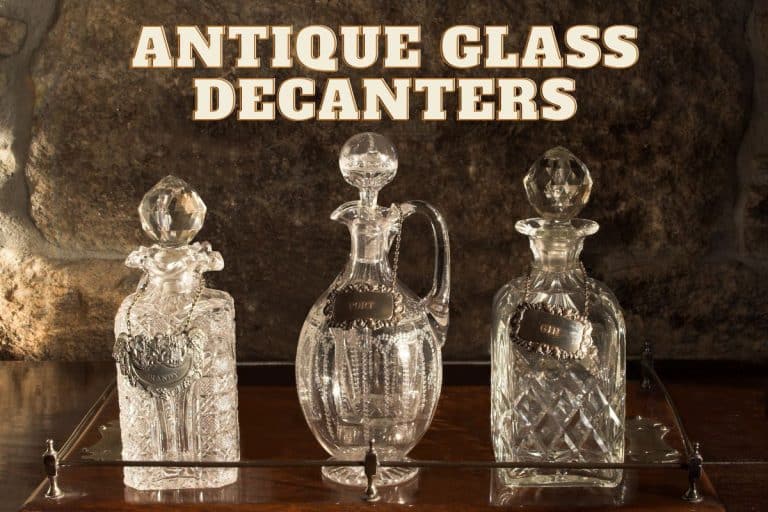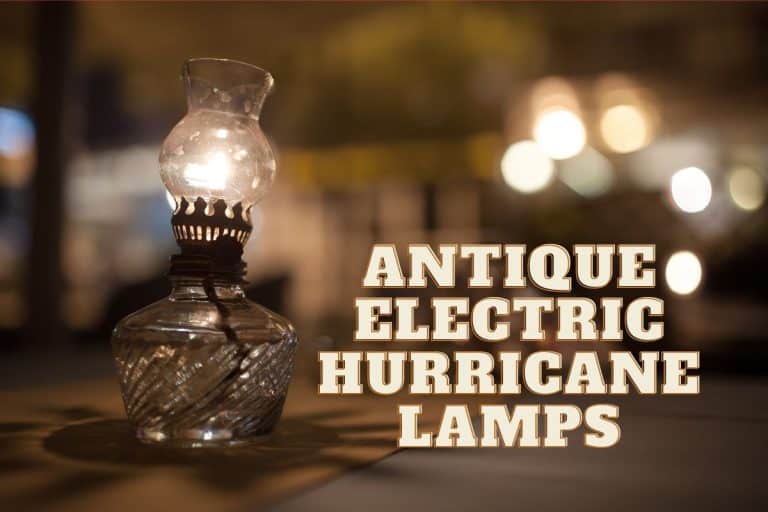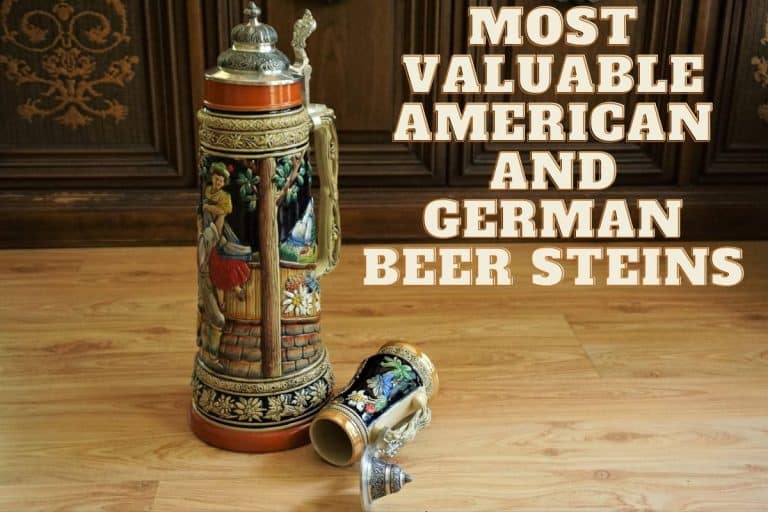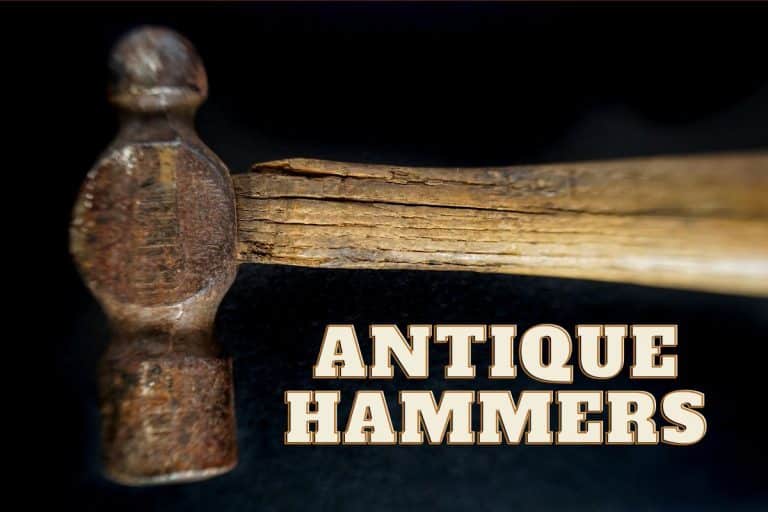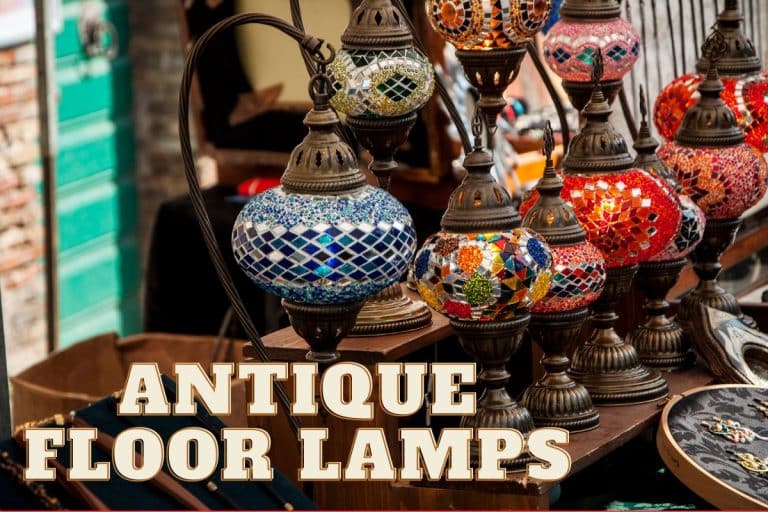Your home deserves an exquisite touch of vintage elegance, and a stunning glass pitcher is just what you need. But how can you be sure that what you are buying is the real deal? Don't fret – our comprehensive guide will equip you with the knowledge to differentiate between mere glassware and an authentic antique gem.
An antique glass pitcher is a perfect addition to any kitchen or dining room and can be used to serve a variety of beverages. It can also be used to enhance the theme of your home's interior if you are going for a more vintage feel.
However, with so many different styles and designs to choose from, it's important to know what you're looking for before you start your search. This post covers all you need to know about identifying genuine antique glass pitchers, including the different types, styles, and characteristics to look for.
Antique Glass Pitchers Identification
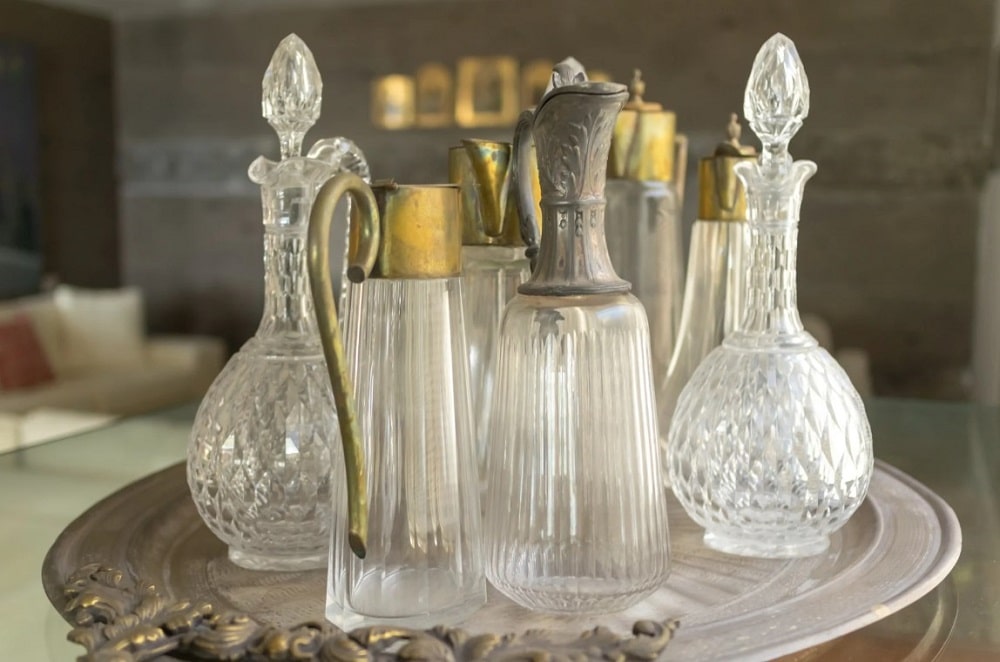
When it comes to identifying an authentic piece of antique glassware, the most important thing to remember is that it’s not always easy. Missing some of these critical features can mean the difference between a real antique and a reproduction. So, how do you ensure you are buying a genuine antique glass pitcher? Here are some tips to help you out.
1. Glass weight
Antique glassware should be thin and delicate. This is because glassware from the past was made from either hand-blown glass or molded glass and was not nearly as thick or as durable as modern glassware.
Therefore, if the glass seems to be quite thick and heavy, it is likely not an authentic antique. Also, note that heavy glass did not come into fashion until the 19th century, so any glass that is too heavy for its size is likely not an antique.
2. Markings
One of the most important things to look out for when identifying an authentic piece is the markings on the base of the glass pitcher. Most glass pitchers have some information on the base that will tell you when and where the glass was made.
Look out for markings such as “Made in …” However, note that not all antiques are marked, so if you don't see any markings, it is not conclusive that the piece is not authentic.
3. Glass Styling
Glass pitchers are available in diverse styles and sizes. Initially, they were commonly slim and tall in shape. Hence, if you come across a pitcher with an urn-like form or a broad midsection and a lengthy, thin neck, it is probable to be an authentic antique glass pitcher.
Later designs were more compact and sturdy. Therefore, be on the lookout for pitchers with an urn-like form or a tall, slender shape, as they are likely to be antiques.
4. Presence of Bubbles
One of the other things you should never overlook when looking for antique glass pitchers is the presence of bubbles. Why? It's because glass made in the 80s and before was handmade, and when it was heated, it tended to create air bubbles.
Therefore, the presence of bubbles can be a quick way to identify an authentic antique glass pitcher. Just ensure you're looking for even, consistent bubbles — this means the glass was made traditionally.
Note: While bubbles, weight, styling, and markings are useful factors to consider when determining the authenticity of an antique glass pitcher's authenticity, relying on any of these factors alone is insufficient to confirm its genuineness. A combination of several of these factors should be taken into consideration to make a more informed and confident conclusion.
Antique Glass Pitchers Value
The value of antique glass pitchers can vary greatly depending on several factors, such as age, condition, rarity, and provenance. It is important to consider the following aspects when determining the value of an antique glass pitcher:
- Age: Generally, older glass pitchers are considered more valuable, as they may have been crafted using traditional techniques and are more likely to be unique or rare.
- Maker and origin: Glass pitchers made by well-known manufacturers or artists are often more desirable and can command higher prices. Some popular glass manufacturers include Tiffany, Steuben, Fenton, and Baccarat. Identifying marks or signatures on the pitcher can help determine its origin and increase its value.
- Design and style: Antique glass pitchers come in a wide range of designs, styles, and colors, which can influence their value. Unique or intricate designs, as well as those that are part of a particular glassware pattern or collection, may be more valuable.
- Rarity: Limited edition, one-of-a-kind, or hard-to-find glass pitchers are likely to be more valuable due to their scarcity. Similarly, pitchers that were produced as part of a short-lived or discontinued series may also command higher prices.
- Condition: The condition of the pitcher plays a crucial role in determining its value. Pitchers with no chips, cracks, or other damage are more desirable and valuable. Additionally, the presence of the original label or box can also increase the value of the pitcher.
- Provenance: The history and ownership of the glass pitcher can impact its value. Items with a well-documented provenance or that have been owned by famous individuals or families may be more valuable.
Types Of Glass Pitchers
Like other glass products such as cups and mugs, there are a variety of different shapes and styles that glass blowers use to create pitchers. So, knowing the different types and styles of available pitchers is important. The following are some of the most popular styles of glass pitchers you should be looking out for.
Cut Glass Pitcher
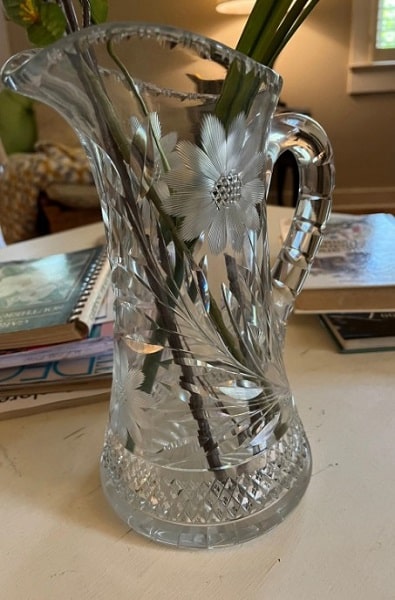
Antique glass pitchers made through the process of cutting pieces from a larger glass sheet are widely known as cut glass pitchers. Such pitchers exhibit an interlocking pattern of shapes on their surface. This style gained popularity in the 18th and 19th centuries.
Pressed Glass Pitcher
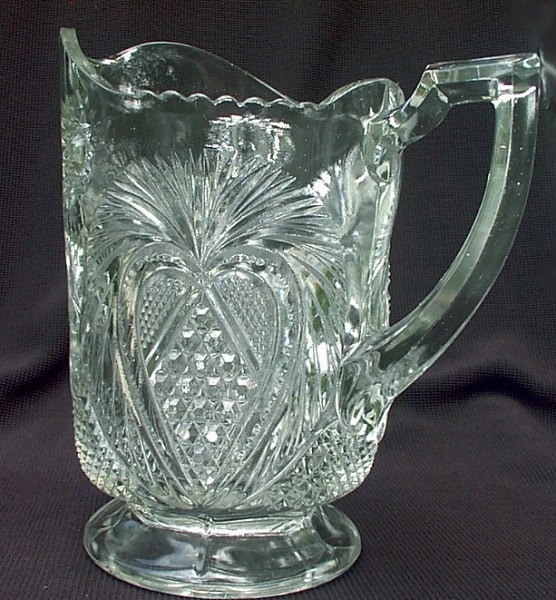
One of the most frequently found antique glass pitchers is the pressed glass pitcher, which was widely popular in the 19th century. This type of pitcher is produced by pouring molten glass into a mold and pressing it to form a raised pattern on the surface of the pitcher. The designs range from basic geometric shapes to intricate depictions of flowers or animals.
Etched Glass Pitcher
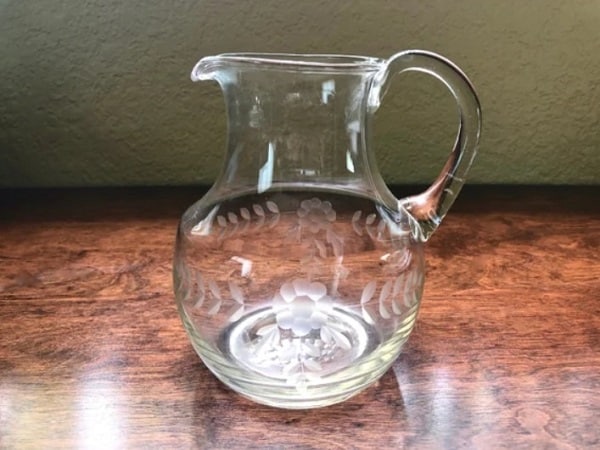
The etched glass pitcher is a type of pitcher that has a design etched into its surface using acid. This technique was prevalent in the 19th century and enjoyed widespread popularity during that time.
How to Test The Age of The Glass?
When evaluating the quality and authenticity of glass, looks can be deceiving. Even if the glass looks old, it does not mean it is! The only way to be sure that the glass pitcher is authentic is by having it tested by a professional. One of the ways professionals use to test if the glass is authentic is by using an X-ray fluorescent test.
This test involves using a device to detect the amount of lead in the glass. In this way, the exact age of the glass can be determined. Professionals can also use thermoluminescence dating. This technique is used to date pottery and other archaeological artifacts.
Both these methods are highly accurate and reliable for determining the age of the glass; however, they require special equipment and skills, which makes them impractical for use by laymen.
Bottom Line
If you're a novice collector, identifying authentic antique glass pitchers can be a challenging task. However, keep your eyes peeled for the telltale signs of a genuine antique, such as bubbles or irregularities in the glass and the various types of glass used for these pitchers.
Whether cut glass, etched glass, or pressed glass, knowing what to look for can make all the difference in finding that perfect antique glass pitcher for your collection. So, head to your nearest antique store and start your hunt with confidence!


